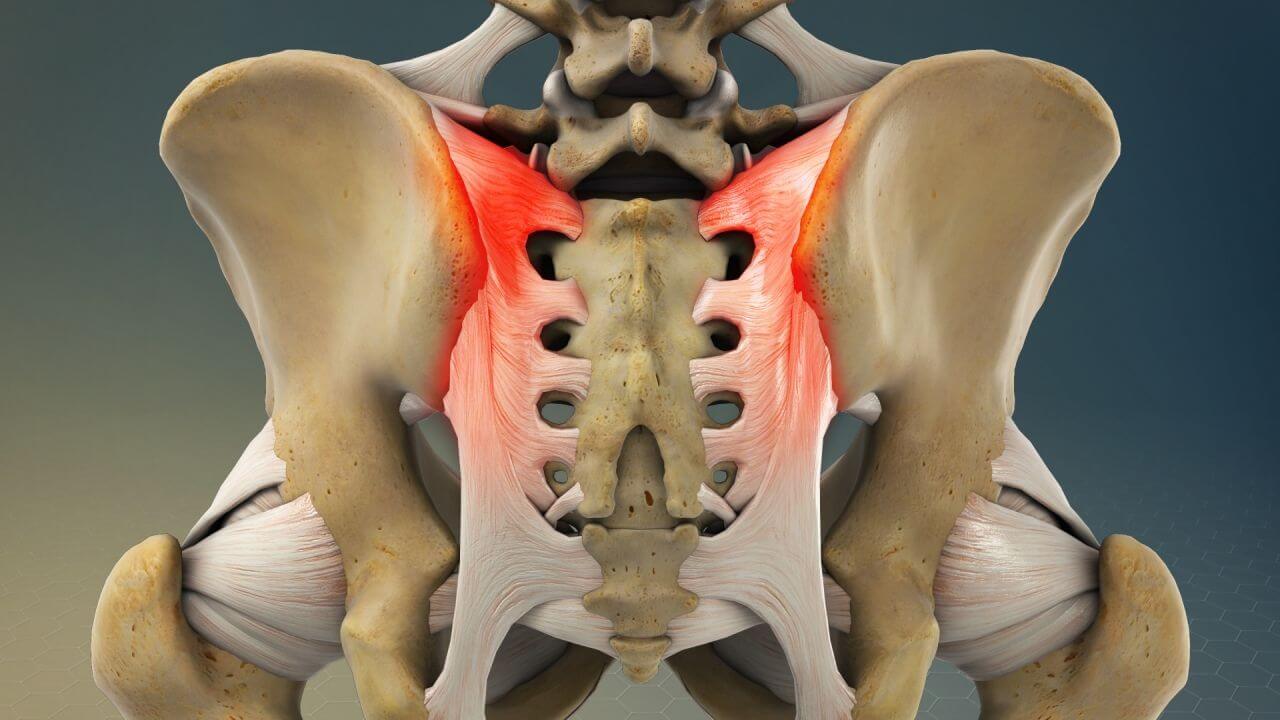Leg length discrepancy, scoliosis or an uneven gait can place uneven pressure on one side of the pelvis, putting excessive wear on the SI joint.
Sacroiliac (SI) joint dysfunction is a condition that is often difficult to diagnose. SI joint pain can feel similar to other lower back issues. The sacroiliac joint connects the triangular bone at the bottom of the spine and the pelvis. It can be an intense source of pain if irritated or disturbed, making normal movement uncomfortable or debilitating.
If you are searching for doctors who specialize in SI joint dysfunction in the Phoenix, AZ area, come to Desert Institute for Spine Care. Our board-certified spine surgeons offer accurate diagnosis and compassionate treatment to target the source of your back pain.



Most people in the U.S. will experience lower back pain at some point in their lives. Of these millions of people, a surprising 15% to 30% are estimated to struggle with sacroiliac joint dysfunction. Despite its prevalence, most people have never heard of SI joint dysfunction.
Sacroiliac joint dysfunction, also called SI joint dysfunction, is a term used to characterize the pain or discomfort felt in the sacroiliac joint region. This type of pain usually occurs in the lower back but can extend to the legs, groin area and hips.
The sacroiliac joint is located in the lower back and is a C-shaped synovial joint affixing the sacrum to the ilium, supported by several muscles and ligaments. The sacrum is a bony, shield-shaped structure found at the base of the lumbar vertebrae, while the ilium is the largest of the three bones that form the hip bone.
The SI joint helps support your body’s weight across the pelvis, acting as a shock absorber for the spine. When any part of the joint becomes misaligned or injured, it can cause joint pain felt in the lower back.
For many patients, SI joint pain seems to appear gradually with no obvious cause. Other patients experience SI joint dysfunction due to injury or trauma, such as a fall or car accident.
Some of the most common factors that cause or increase the risk of developing SI joint dysfunction include:
Leg length discrepancy, scoliosis or an uneven gait can place uneven pressure on one side of the pelvis, putting excessive wear on the SI joint.
Certain activities such as regular heavy lifting, labor-intensive jobs or contact sports can place repeated stress on the SI joint. Prolonged sitting or standing can also contribute to SI joint dysfunction.
Prior surgery to the lower back can displace pressure to the sacroiliac joint, putting patients at risk of SI joint dysfunction.
The release of the hormone relaxin during pregnancy can cause the joints to be less stable. Coupled with weight gain and undue pressure from the growing baby, this can lead to SI joint pain.
Conditions like osteoarthritis and gout can be associated with SI joint dysfunction.
For an accurate diagnosis of SI joint dysfunction, we invite you to meet with one of the experienced orthopedic surgeons at DISC in Arizona. This condition can be difficult to distinguish from similarly presenting syndromes, which is why we use Personalized Pain Diagnostics (PPD). By applying the latest technology and diagnostic tools, we can discern if your true pain generator is SI joint dysfunction. We then use this information to create a personalized treatment plan.


The goal of SI joint dysfunction treatment is to relieve pain and restore normal mobility to the joint. To do this, we offer a wide range of minimally invasive treatment options. Our compassionate team always begins with conservative care, including:
Once all nonoperative treatment options are exhausted, we may suggest a least invasive surgical solution. The surgeons at DISC are leaders in endoscopic spine surgery.
For doctors specializing in cutting-edge treatment for sacroiliac joint dysfunction, turn to the orthopedic team at DISC in the Phoenix, AZ area.
Our spine health blog features up-to-date spine education and expert spine tips from our spine specialists here at DISC.
1635 East Myrtle Avenue Suite 100, Phoenix, AZ 85020, USA
18700 North 64th Drive Suite 105, Glendale, AZ 85308, USA
8630 East Vía de Ventura Suite 210, Scottsdale, AZ 85258, USA
3487 South Mercy Road, Gilbert, AZ 85297, USA
1635 East Myrtle Avenue Suite 400, Phoenix, AZ 85020, USA